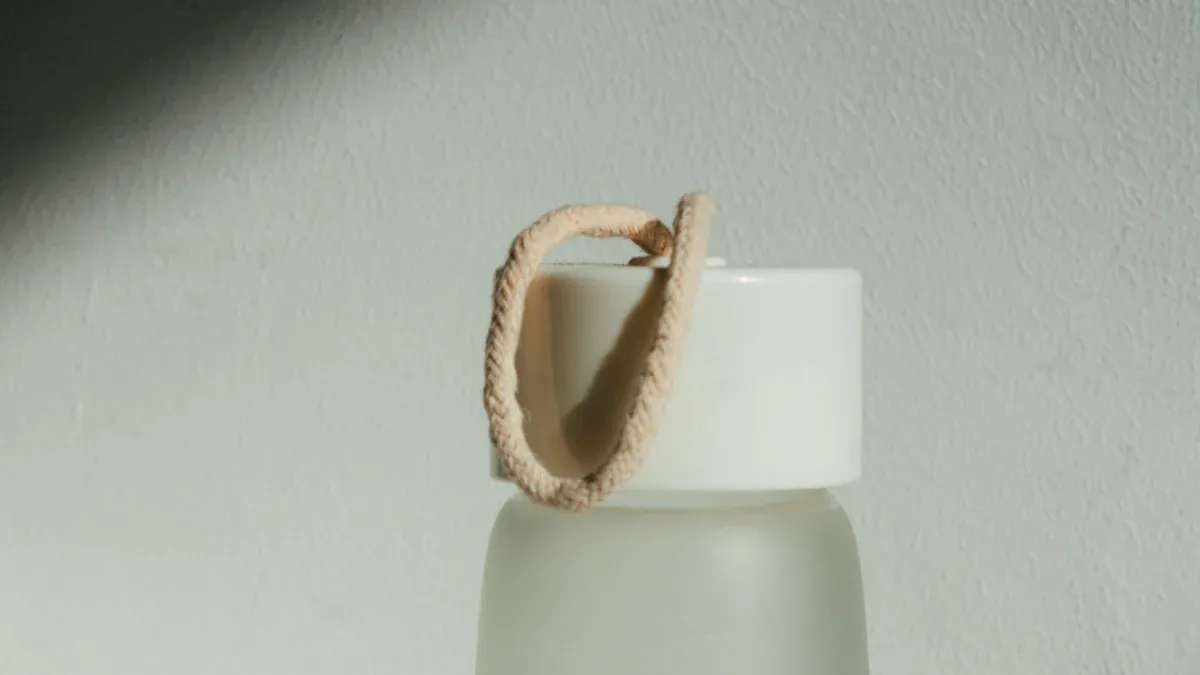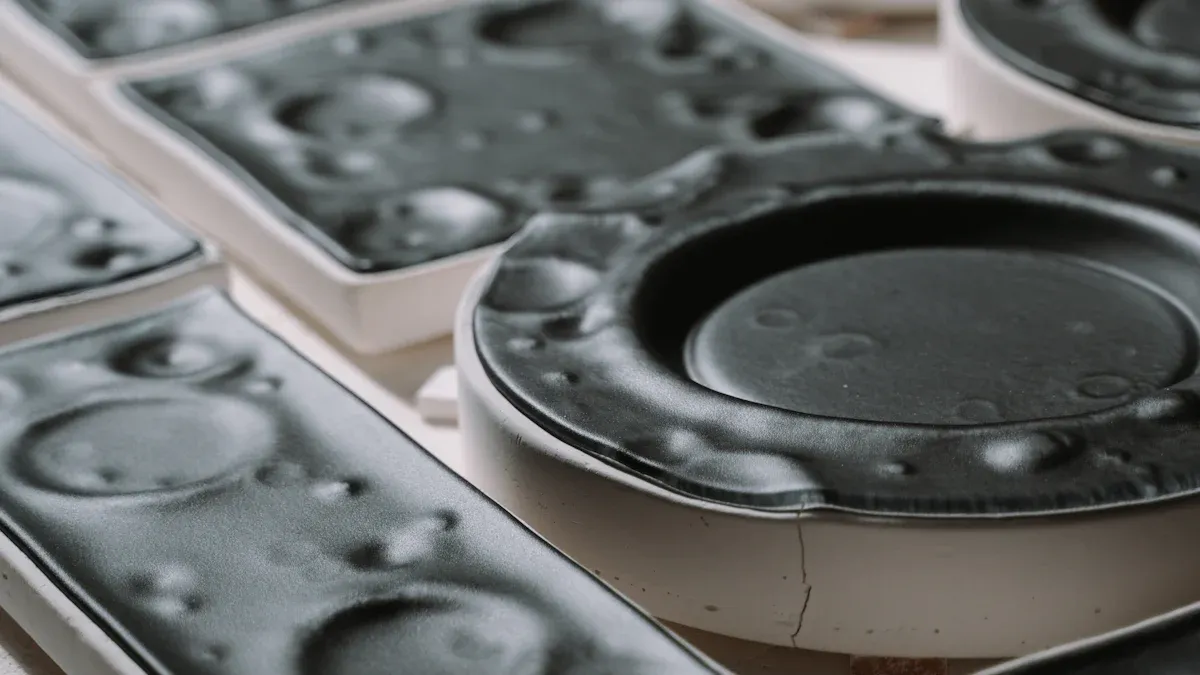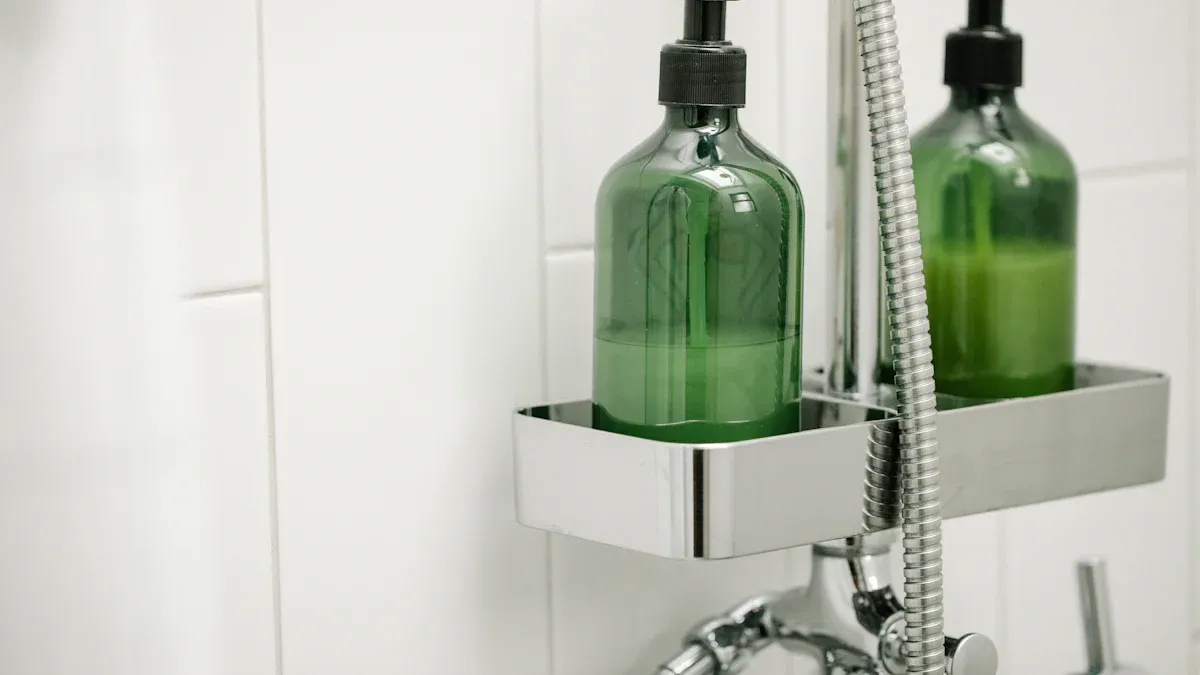
Sustainable practices are changing how you think about injection molding. These practices focus on reducing waste and conserving resources, creating a more efficient manufacturing process. Recycling plays a key role by transforming discarded materials into usable plastics, reducing the environmental impact of production. When you embrace sustainability, you help protect the environment while meeting growing demand for eco-friendly products.
Sustainability in manufacturing focuses on reducing environmental harm while maintaining efficiency. It involves using resources responsibly, minimizing waste, and adopting eco-friendly technologies. In injection molding, this means using materials and processes that lower energy consumption and reduce waste. For example, the process inherently minimizes waste by using only the necessary amount of plastic for each cycle. Recycling scrap plastic and packaging materials further supports sustainability goals.
Many manufacturers now prioritize sustainability to meet growing environmental standards. They adopt practices like using biodegradable plastics, optimizing production processes, and integrating sustainable design principles. These efforts not only protect the environment but also improve operational efficiency.
Sustainable practices are critical in injection molding because they address environmental concerns while enhancing production efficiency. By using recycled plastics and energy-efficient machinery, you can significantly reduce your carbon footprint. Innovations like rapid prototyping also help minimize waste and improve production speed.
Sustainability benefits your business in multiple ways. Lower resource consumption reduces costs, while eco-friendly practices improve brand reputation. Many companies report better sales and customer loyalty when they adopt sustainable injection molding methods. Additionally, these practices align with consumer demand for environmentally responsible products.
Several factors drive sustainability in injection molding. Regulatory pressures encourage compliance with environmental standards, especially in regions like the EU. Material selection plays a key role, with biodegradable plastics and recycled resins gaining popularity. Process optimization, such as reducing energy use and waste, further supports sustainable practices.
| Key Factor | Description |
|---|---|
| Regulatory Pressures | Increasing environmental and social concerns drive compliance with EU sustainability standards. |
| Material Selection | Choosing eco-friendlier materials like biodegradable plastics and recycled resins reduces ecological impact. |
| Process Optimization | Enhancing manufacturing processes to minimize waste and energy consumption contributes to sustainability. |
| Sustainable Design Principles | Integrating holistic design approaches that consider the full product lifecycle promotes sustainability. |
By focusing on these factors, you can contribute to a more sustainable injection molding industry while meeting both environmental and economic goals.

Recycled plastics offer several benefits when used in injection molding. First, they significantly reduce production costs. You can reuse materials instead of relying on virgin plastics, which are often more expensive. Second, the process does not require redesigning existing injection molding machines. This makes it easier for manufacturers to adopt recycled materials without additional investments. Third, products made from recycled plastics maintain the same strength and quality as those made from virgin materials. This ensures that you can meet customer expectations without compromising on performance.
Recycling plastics also helps reduce environmental waste. By reusing materials, you prevent discarded plastics from ending up in landfills or oceans. Companies that adopt recycled plastics demonstrate a commitment to sustainability. This can enhance their brand image and attract eco-conscious consumers.
Tip: Using recycled plastics not only benefits the environment but also improves your bottom line by cutting costs and boosting your brand reputation.
Recycling for injection molding comes with challenges, but innovative strategies can help you overcome them. One common issue is maintaining the quality of recycled materials. Some companies, like Essentra Components, have successfully addressed this by achieving a 50/50 ratio of recycled content to virgin plastics in LDPE. They even use up to 98% recycled plastic without compromising quality. Another challenge is reducing material waste during production. Major injection molders have adopted comprehensive waste reduction practices, significantly lowering material consumption and waste generation.
| Company | Strategy | Outcome |
|---|---|---|
| Essentra Components | Achieved a 50/50 ratio of recycled content to virgin plastics in LDPE. | Reduced reliance on virgin materials by using 98% recycled plastic without compromising quality. |
| Major Injection Molders | Adopted comprehensive waste reduction practices at scale. | Significant reductions in material consumption and waste generation across the industry. |
By learning from these examples, you can implement similar strategies to address recycling challenges in your operations.
Advanced recycling techniques are transforming the injection molding industry. Regrinding and reprocessing are two common methods for recycling and reusing scrap material. Regrinding involves grinding down leftover molded parts and reintroducing the material back into the molding cycle. This reduces waste and ensures efficient use of resources. Manufacturers also use sustainable polymers and bioplastics, which are easier to recycle and have a lower environmental impact.
New technologies, such as AI-driven materials development, are making plastics more sustainable. These innovations allow you to identify the best recyclable materials for your products. Recycling and reusing plastic materials, including post-industrial residue, further supports sustainability. By adopting these advanced recycling techniques, you can reduce waste and contribute to a circular economy.
Note: Embracing innovations in recycling not only helps the environment but also positions your business as a leader in sustainable manufacturing.

Energy-efficient injection molding machines are transforming the way you approach manufacturing. These machines consume significantly less energy compared to older models. For instance:
- Modern energy-efficient machines use approximately 0.9 kWh of energy per kilogram of plastic, while older machines consume about 1.6 kWh per kilogram.
- This translates to energy savings of up to 43.75% per kilogram of plastic produced.
For a small facility producing 10 tonnes of plastic parts weekly, energy consumption can range from 9,000 kWh to 16,000 kWh. Larger facilities producing 50 tonnes may use between 45,000 kWh and 80,000 kWh. By adopting energy-efficient injection molding machines, you can significantly reduce energy usage and lower operational costs.
These machines also contribute to sustainable facility operations by reducing greenhouse gas emissions. When you invest in energy-efficient technology, you not only save money but also support sustainability goals. This approach aligns with the growing demand for eco-friendly manufacturing practices.
Reducing material waste is a cornerstone of sustainable injection molding. Effective waste management practices help you create a cleaner environment and lower the ecological impact of manufacturing. Here are some strategies you can implement:
- Use recycled or recyclable materials to minimize waste. Although the initial costs may be higher, the long-term environmental benefits outweigh the expense.
- Develop a waste minimization plan that focuses on preventing waste generation during the injection molding process.
Metrics such as volume reduction, cost savings, and recycling rates can help you measure the success of your waste management efforts. For example, repurposing scrap plastics or regrinding leftover materials ensures that nothing goes to waste. These practices not only reduce material waste but also improve your bottom line by cutting costs.
An effective waste reduction strategy emphasizes resource management. By focusing on minimizing, recycling, or repurposing waste, you can achieve significant environmental and economic benefits.
Adopting circular economy principles can revolutionize your injection molding process. These principles focus on extending the lifecycle of materials and reducing waste. A full life cycle analysis (LCA) of a cladding panel demonstrated the potential of this approach. If the product is reused nine additional times, it saves the equivalent of ten instances of alternative materials and their associated carbon emissions.
A related study highlighted that a multi-lifecycle approach could lead to over 20% savings in total lifecycle costs and global warming potential. By reusing and recycling materials, you can reduce your reliance on virgin plastics and lower your carbon footprint.
Circular economy principles also encourage sustainable material selection. Choosing materials that can be reused or recycled supports long-term sustainability. This approach not only benefits the environment but also positions your business as a leader in sustainable injection molding practices.
When you integrate these principles into your operations, you contribute to a more sustainable manufacturing ecosystem. This aligns with consumer expectations for eco-friendly products and helps you stay ahead in a competitive market.
Sustainable injection molding practices play a vital role in reducing the environmental impact of manufacturing. By adopting green manufacturing techniques, you can significantly lower carbon emissions, waste, and pollution. For example, lean manufacturing methods have been linked to better environmental performance. A study by King, Lenox, and Management found that companies using these techniques showed improved environmental outcomes across 17,499 enterprises. Similarly, Rothenberg et al. highlighted that lean management reduced volatile organic compound emissions in the vehicle sector.
| Study | Findings |
|---|---|
| King, Lenox, & Management | Lean manufacturing improved environmental performance in 17,499 firms. |
| Rothenberg et al. | Lean management reduced emissions in the vehicle sector. |
These strategies not only reduce your environmental footprint but also enhance your reputation as a responsible manufacturer. By focusing on sustainability, you contribute to a cleaner environment while meeting regulatory standards.
Sustainability in injection molding offers significant cost-saving opportunities. Using recycled plastics reduces your reliance on virgin materials, which are often more expensive. Energy-efficient machinery further lowers operational costs by consuming less power. For instance, modern injection molding machines can cut energy usage by up to 43.75% compared to older models. Waste reduction strategies, such as regrinding leftover materials, also help you save money by minimizing material loss.
Eco-conscious manufacturing not only reduces costs but also strengthens your business case for sustainable injection molding. Companies that adopt these practices often see long-term financial benefits. Lower resource consumption and reduced waste generation translate into substantial savings over time. By investing in sustainability, you improve your bottom line while reducing your environmental footprint.
Consumers increasingly prefer eco-friendly products, creating a strong demand for sustainable injection molding solutions. A recent survey revealed that 42% of American consumers identify as eco-friendly purchasers. This trend highlights the growing importance of recyclability and sustainable packaging solutions in the plastics industry. By offering products made from eco-friendly materials, you can attract environmentally conscious buyers and build customer loyalty.
Sustainable practices also align with consumer expectations for businesses to take responsibility for their environmental impact. When you prioritize sustainability, you not only meet market demands but also position your brand as a leader in the industry. Offering sustainable packaging solutions and products made from recycled plastics helps you stay competitive in a rapidly evolving market.
Tip: Meeting consumer demand for eco-friendly products can boost your sales and enhance your brand image.
Sustainable practices are reshaping injection molding by reducing waste and conserving resources. Recycling plays a vital role in minimizing the environmental impact of manufacturing. Using recycled plastics and energy-efficient machinery helps you lower emissions and waste while maintaining product quality. These practices not only protect the planet but also align with consumer demand for eco-friendly products.
Adopting sustainable injection molding methods positions your business as a leader in responsible manufacturing. You can reduce costs, improve efficiency, and contribute to a cleaner environment. Start implementing these practices today to make a lasting difference.
Sustainable injection molding reduces waste, lowers energy consumption, and cuts costs. It also helps you meet environmental regulations and attract eco-conscious customers. By adopting these practices, you improve efficiency, protect the planet, and enhance your brand reputation.
Yes, recycled plastics can match the quality of virgin materials. Advanced recycling techniques ensure durability and performance. Many manufacturers successfully use recycled plastics without compromising product standards, making them a reliable and eco-friendly choice.
Energy-efficient machines consume less power, reducing operational expenses. For example, modern machines use up to 43.75% less energy than older models. Lower energy usage translates into significant savings, especially for facilities with high production volumes.
While initial costs may seem high, sustainable practices save money over time. Using recycled materials, reducing waste, and optimizing energy use lower operational expenses. These practices also improve efficiency and boost your bottom line.
Eco-friendly products appeal to environmentally conscious buyers. Meeting this demand helps you attract loyal customers and stay competitive. Offering sustainable solutions also positions your brand as a leader in responsible manufacturing.